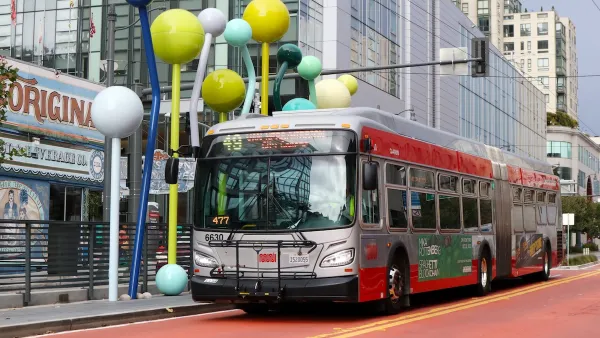If your city was home to some of the wealthiest, largest companies in the country, would you tax them to raise money for more housing and transit service?

"In a stunning reversal without parallel in Seattle’s recent political history, the City Council voted 7-2 Tuesday to repeal a controversial head tax on large employers like Amazon," reports Daniel Beekman.
The vote comes less than a month after the City Council approved the head tax on a unanimous vote. The approved tax was greatly reduced from the original proposal—from $500 to $275 per employee. The compromise resulted from pressure by Amazon after it halted construction on an expansion project as a result of the proposed tax.
The vote to rescind the tax came after a "business-backed campaign to kill the tax prepared to submit petition signatures this week to qualify the referendum for the November ballot," reports Beekman. For additional coverage of the ongoing debate of the Seattle head tax, see also an article by Sarah Holder.
Seattle is not the only city right in tech company capitalism and short on housing affordability to consider the head tax. At the beginning of May, Wendy Lee wrote of a "Google Tax" that could "fix every Silicon Valley problem." Specifically, the city of Mountain View is considering a ballot initiative that would tax companies based on how many employees they have. George Avalos provided coverage of the same proposed tax later in the month.
The potential spread of head taxes gained attention around the country. Writing for the Seattle Times, in the home of Amazon, Eric Newcomer wrote of the numerous cities considering a version of a head tax, including San Francisco, Cupertino, and East Palo Alto, in addition to Seattle and Mountain View. Articles in Smart Cities Dive, The Wall Street Journal [paywall], and Bloomberg look at the larger trend of cities exploring the head tax as a potential source of funding for the woes of contemporary urban living.
FULL STORY: About-face: Seattle City Council repeals head tax amid pressure from businesses, referendum threat

National Parks Layoffs Will Cause Communities to Lose Billions
Thousands of essential park workers were laid off this week, just before the busy spring break season.

Retro-silient?: America’s First “Eco-burb,” The Woodlands Turns 50
A master-planned community north of Houston offers lessons on green infrastructure and resilient design, but falls short of its founder’s lofty affordability and walkability goals.

Delivering for America Plan Will Downgrade Mail Service in at Least 49.5 Percent of Zip Codes
Republican and Democrat lawmakers criticize the plan for its disproportionate negative impact on rural communities.

Test News Post 1
This is a summary

Test News Headline 46
Test for the image on the front page.

Balancing Bombs and Butterflies: How the National Guard Protects a Rare Species
The National Guard at Fort Indiantown Gap uses GIS technology and land management strategies to balance military training with conservation efforts, ensuring the survival of the rare eastern regal fritillary butterfly.
Urban Design for Planners 1: Software Tools
This six-course series explores essential urban design concepts using open source software and equips planners with the tools they need to participate fully in the urban design process.
Planning for Universal Design
Learn the tools for implementing Universal Design in planning regulations.
EMC Planning Group, Inc.
Planetizen
Planetizen
Mpact (formerly Rail~Volution)
Great Falls Development Authority, Inc.
HUDs Office of Policy Development and Research
NYU Wagner Graduate School of Public Service





























